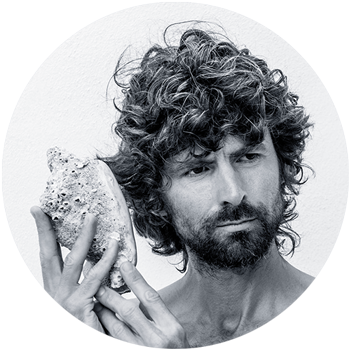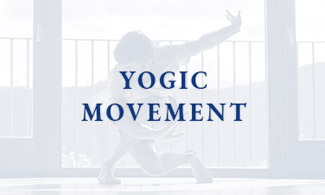
On The History of Yoga Āsana
A few years ago was published a book advancing a very narrow and very particular thesis on the ‘origins’ of physical yoga practice and modern āsana. In this book, the author suggests that the postures and practices of what is sometimes referred to as modern yogāsana are just adaptations of British gymnastics and an outgrowth of the desire in late 19th/early 20th century India to reaffirm a culture of physical strength after the centuries of oppression under foreign invaders. Certainly, these factors may of course have had some significant influence on the spread and development of modern, body-based yoga practices. However, I find the idea that they are main sources for physical yoga unconvincing and disrespectful. One of the principal ways the author who advanced this thesis likes to supposedly ‘justify’ or ‘substantiate’ his ideas is by inserting the name of some other published academic in brackets, as if their work is undeniable, thoroughly substantiated ‘Gospel truth’, which it often isn’t. As well as most pages being peppered with other academics’ names in parentheses, another outstanding feature of the book is what it leaves completely absent. The author completely avoids/ignores/discounts the traditional view of the origin of yogāsana and other related physical practices in the Indian tradition.
With the complete dismissal of any Indian physical culture before the 19th century, it’s almost as if the author thinks that nobody had ever moved, or danced, in India before they got sick to the back teeth with the British. And further, as if in ancient India: a civilisation of great learning, of depth, beauty and thorough consideration of the whole human being; there was no culture of physical artfulness, no methods of dance, movement or martial arts to help people inhabit the gift of a body more easily.
Such an idea just does not make sense.
However, not only is it nonsensical, I would say it also smacks of an astounding arrogance that can be seen on the part of some ‘Western’ commentators on the Indian tradition: “Oh the Indians, these brown people, couldn’t possibly have developed such a refined and well thought out system of physical health, could they?” Couldn’t they? Again, this view makes no sense. What it does do though is perpetuate the distorting legacy and blinkered perspective that seems to have infected the Western academy going back to the days of the 19th century. At that time, Europeans had started to ‘discover’ some of the treasures of the Indian tradition. This included Sanskṛt, with its oceans of extant literature in so many fields of human knowledge, with a grammar far more sophisticated and a literature much more extensive than the Greek and the Latin. The Sanskṛt linguistics went way beyond anything any European scholar had even dreamed of at the time. But the 19th century Europeans just couldn’t swallow, accept, or admit – or perhaps they were so blinkered by their conditioning that they just weren’t able to see – that these brown people had developed a culture in some ways so much richer than theirs. That while their European ancestors had been stuck in the Dark Ages, these Indians had been pushing the frontiers of human understanding for millennia and enjoying a civilisation far more advanced than had ever been glimpsed in the Europe of the time. The 19th century ‘scholars’ did notice however, so many cognates in the Sanskṛt, Greek and Latin. So, in order to explain how Greek, Latin and Sanskṛt had so much in common, the European ‘discoverers’ made an invention. Rather than honestly consider the vastly abundant evidence in front of them, in the form of a truly amazing Sanskṛt and proto-Sanskṛt Vedic literature, the Europeans concocted the idea of an ‘Indo-European root language’, a language for which there was no material evidence. But no matter, that suited their arrogant, blinkered, falsely superior perspective much better than allowing for the possibility that Sanskṛt, a language developed by the peoples of this ‘primitive’ land that they had colonised and pillaged for its vast riches, was perhaps actually the source language. To the chagrin of many contemporary Sanskritists in India, this concocted theory of an ‘Indo-European root language’ is still prevalent and widely accepted today, even though there is still no evidence of such a language that is not Sanskṛt or its earlier Vedic forms.
There is however, plentiful textual evidence to suggest that the civilization in India in the 1500 years both before and after Christ was, in many ways, significantly more advanced than in Europe. There is also plentiful evidence that some Western commentators are not aware how veiled by their cultural conditionings their ‘readings’ of Indian culture are.
Any of my Sanskṛt teachers who were aware of this book were quite horrified and disgusted by it. In particular, by the way it seems to discount the Indian reality of yoga, that Yoga is a central, intrinsic part of the Indian tradition: Vedic, Tantric, Orthodox, Hetorodox, Yoga is there. I would say too that yoga is also part of a global tradition, with many of its core principles evidenced in wisdom traditions from around the world. Still, Yoga is Indian, Yoga is a Sansḳrt word, and a system of classical Indian Philosophy. Yoga as it has come to us in the 21st century has been most thoroughly developed in the traditions of India: a holistic, practical philosophical tradition that deals with the broad spectrum reality of human existence, including our physicality and physical health.
Here is an alternative view on the history of yoga āsana.
The Lord of Yoga is Śiva. Śiva is represented in many ways. As Yogīśvara, he is usually sitting in a radiant example of a steady, easy classic yogāsana such as siddhāsana or padmāsana. His spine is tall, spacious, erect. His aspect serene as he sits on a tiger skin atop a Himālayan peak. The seat on the tiger’s skin demonstrates his mastery over the tremendous powers of incarnation, of his physicality and sensuality, to the degree that he is steadily established in the ‘abode of snow’: the place of clear, pure, pristine, impartial awareness. His clothing is mere ash, reminding us that having fully harnessed the gifts of life consciousness, he is attuned to the essence – to the remainder which abides and which underlies all the material that comes and goes. His adornment is the king cobra, showing us that in the clarity, impartiality and purity of his awareness, the beguiling beauty of nature is his enjoyment, his companion, his friend; it is no danger, poison or snare for him.
In his jaṭa, his locks dreaded by the fusion of the hemispheres of his brain – the joining in yoga of his analytical and intuitive capacities, he holds Gaṅgā, the vivifying river of concious potential, so she can flow smoothly, gently, easily, to nourish the whole field of consciousness, the whole body of life.
In this form, Śiva Yogīśvara can be seen to represent dynamism in stillness. Another way Śiva is represented is as Nāṭarāja, stillness in dynamism. Nāṭarāja is the Lord of the Dance, the five act dance-drama of Creation: the expansion of consciousness, the sowing of life, sṛṣṭi in Sanskṛt; of sthithi, the sustenance of existence, holding the galaxies in their dance; of samāhāra, the drawing back in to its source of the universe; of tirodhana bhāva, of the concealing or veiling of the real deeper nature of existence and consciousness; and of anugraha, grace, or the revelation and remembering of who we really are.
As Nāṭarāja, Śiva is shown as a slender-waisted, androgynously beautiful and graceful dancer. He is four-armed. In one hand he holds the damaru, the twin-headed drum that symbolises the beat, the rhythm, the pulsation of life, the sound of the creation of existence: sṛṣṭi. Another hand is in abhaya mudra, the gesture signifying ‘have no fear’ – sustenance/sthiti. The third hand wields fire, the circle of flames, symbolising the ever-turning, ever-changing wheel of existence, the circle of life, in which he is constantly dancing. The fourth arm makes the shape of an elephant’s trunk. This symbolises the unifying power of yoga as incarnated by Śiva’s elephant-headed son Gaṇeśa. The fourth hand is pointing to the junction point of Nāṭarāja’s lifted, bent knee. This reminds us that it is through yoga, through gathering and harmonising all the members of the group of our being that we can re-member our true selves. Nāṭarāja’s standing foot is on top of a dwarf called Apasmara – forgetfulness. When we reconcile all of who we really are, when we incarnate the integrated Gaṇeśa energy that is our innate potential, we can remember ourselves. We too can come into rhythm, so we can stay steady and balanced, attuned to our constant, conscious essence, amidst the whirling wonder of life.
Śiva Nāṭarāja is also depicted with the locks of his jaṭa flying out horizontally: for the worlds whirl so quickly, he dances so quickly, yet he is serene, graceful, poised and in rhythm.
Sometimes at temples dedicated to Śiva Nāṭarāja, there are sculptures or depictions of the 108 kāraṇa-s of Śiva as the great dancer, the 108 ‘instrumental positions’ that can be deployed to invite a deepening of yoga in our systems.
These postures are graceful, often curved. They include spinal extension and flexion (backward and forward bends), rotations, side bends and various combinations thereof. They move the limbs and orient the physical structure in space so as to activate the innate haṭha technology of our pulsating bodies. Ha is the sun, the solar channel, heating and contracting; ṭha is the moon, the lunar channel, cooling and relaxing. Life is pulsation, a breath cycle, a heart beat. But these are not the only ways in which our miraculous bodies pulsate. For example, if while standing we lift our right leg upwards in front of us, the front of the leg contracts, ha, while the back lengthens and relaxes, ṭha. Just by the way we move and orient ourselves in space we can influence profoundly the way energy and information pulsates and flows in and through our systems.
Traditionally, within the Yoga Tradition, Śiva himself, Yogīśvara, the Lord or Master of yogi-s, Nāṭarāja, the greatest dancer, is said to have bequeathed yogāsana to human beings. Śiva of course also means the kind, benevolent one. And Śiva means consciousness, the container in which all the śakti – the power of consciousness to become manifest as nature for example – exists.
The yogāsana, like all yoga techniques and teachings, are all based on the observation of nature. It is a fruit of the application of consciousness in focused inquiry. This, as far as I can see, is the real origin of yogāsana.
It was not the British colonisers or the American branders who recognised that the way we move our body can have profound impacts on our overall experience and awareness. This is something people have known since the beginning of time.
The 108 kāraṇa-s of Śiva Nāṭarāja, the plentiful evidence in ancient texts of dance and martial arts that harness the innate haṭha capacities of the body are to my mind adequate evidence that India, just like China, has an ancient system of health that includes movement technologies. Indeed, the 108 kāraṇa-s of Nāṭarāja are very akin to many postures in Chinese martial arts and dance. Humans have been harnessing this in-built haṭha technology for millennia. Call it dance, call it haṭha yoga, call it tai chi, chi gung, subtle or internal martial arts, the aim is the same: to harmonise the bodily vehicle and optimise its capacities so that energy can flow in a cohesive, efficient way, so we can more easily stay in rhythm through the ups, downs and tempo changes of life, and we are more empowered to access the subtler dimensions of our conscious potential.
Āsana and haṭha yoga, ‘somatic yoga practice’ is nothing new. The absence of texts with pictures or descriptions of people performing āsana-s, or the dearth on Youtube of footage of people’s ‘morning practice’ from before the Common Era is not evidence that people had no ‘physical’ or body-based practices. After all, these practices are things one does, they are best learned by doing, they are known by the cells and channels of one’s body, not by their descriptions in a book. Physical practices are part of our human heritage. We have a body, it can move in so many ways. It is a storehouse and circuit of energy. The way we move can affect our physical, mental, sensory capacities. The ancients knew this. I feel pretty sure that people have been harnessing and developing the technologies (tantra-s) of haṭha yoga in posture and movement for millennia.
Article Image: An image of Śiva, Yogīśvara, who traditionally is recognised as the source of yoga āsana and haṭha yoga methodologies. I am not sure whose artwork this is, if anyone knows please tell me so I can credit it. This picture was sent to me by a friend in an email one time.

James Boag | Whole Life Yoga
The yoga of the whole human being. Practical philosophy, storytelling, movement, inquiry, looking in ways that reach beyond our habitual ways of looking.
Listen to James’ unique whole life yoga perspectives on the WHOLE LIFE YOGA podcast.











